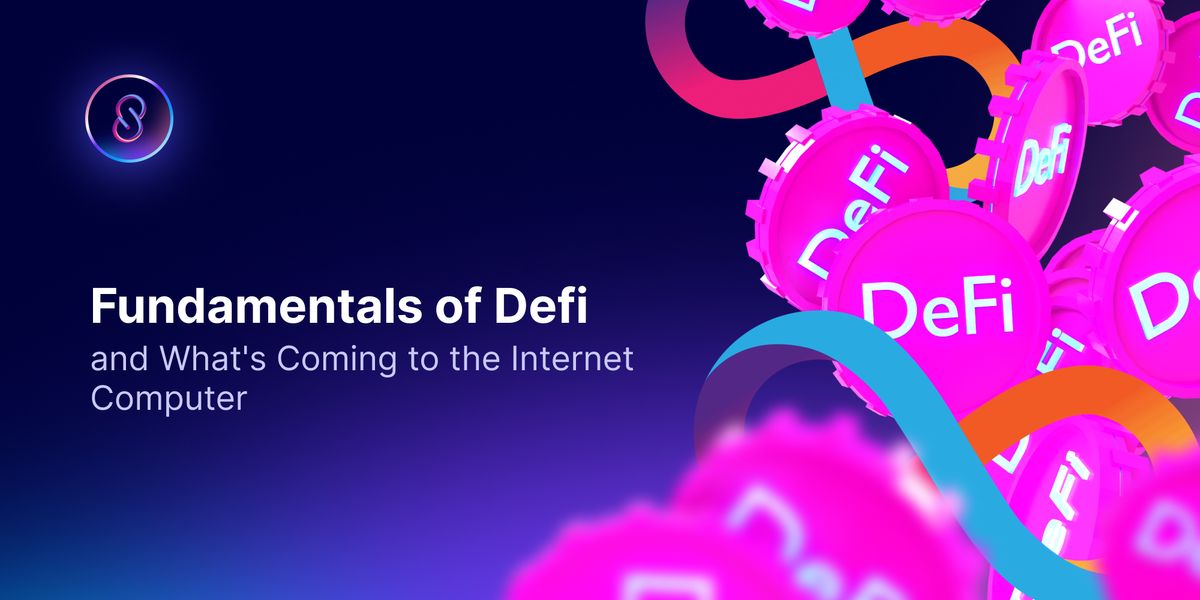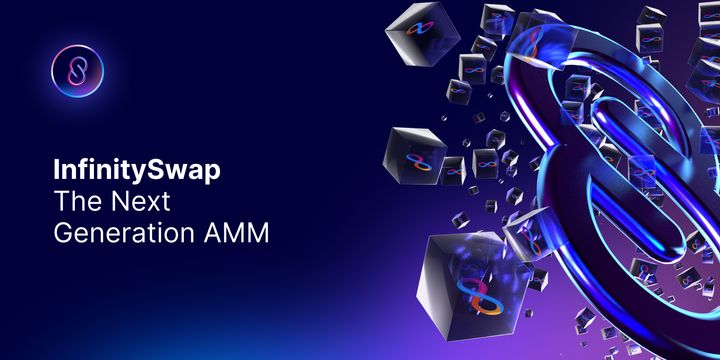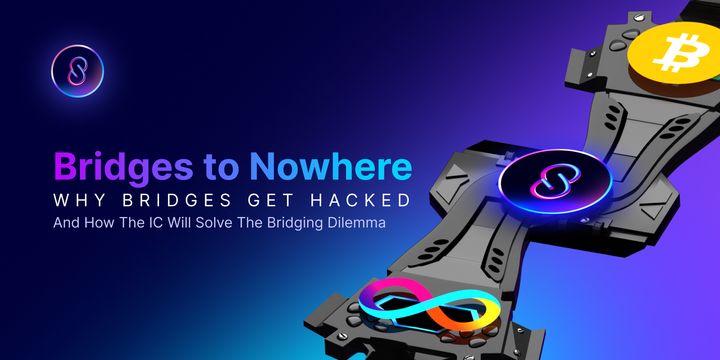Fundamentals of Defi and What's Coming to the Internet Computer
Decentralized finance is an exciting space and is developing rapidly every day. While the markets are in the bear part of the cycle for the foreseeable future, developers in the crypto and defi space are not slowing down.

Decentralized finance is an exciting space and is developing rapidly every day. While the markets are in the bear part of the cycle for the foreseeable future, developers in the crypto and defi space are not slowing down.
This is true for the developers aiming to build on the Internet Computer as well. Decentralized finance is beginning to be explored on the Internet Computer, leading to more ways for people to exchange value, borrow, lend, and do a host of other financial tasks in a decentralized manner on the IC.
Developers building on the IC right now have a massive benefit– they are able to learn from both the wisdom and mistakes that have been made on other blockchains.
One of these lessons is in building what is called the “defi primitives.” In order for defi to thrive on the Internet Computer and for any blockchain in general, certain applications must be built before more complex ones can take off. These fundamental building blocks, or primitives, are the first ways in which users can exchange value with one another and perform tasks that create a flourishing environment for interaction.
The most critical of the defi primitives is a decentralized exchange or DEX and a money market to lend and borrow. The importance of each of these is not to be understated, as most other defi protocols extend their functionality or build on top of them directly. Prior to understanding the defi primitives, there are two other building blocks that are necessary for even the primitives to succeed.
Stablecoin
Across the vast majority of both decentralized and centralized exchanges, the most commonly traded pairs are those that involve USD or a USD-pegged stablecoin. For example, on Uniswap on Ethereum, the highest volume pair is ETH-USDC. On Pancakeswap on the Binance Smart Chain, the highest volume pair is BNB-USDT, while the highest volume pair on Serum's Solana is SOL-USDC.
All this is to say that in order for even a DEX to prosper on a new chain, there must be a stable, non-investment store of value on that chain. Most people’s preferred way to store value on-chain is in stablecoins.
It is also the best way to capitalize on short-term trading and take profits. The many benefits of stablecoins mean that it is essential for a defi environment to have a stablecoin in order to facilitate even the most basic of trades on a DEX.
Bridge
Another interchain component of a new defi environment is a bridge. A bridge in defi terms refers to an application that can facilitate the transfer of assets from one blockchain to another in a decentralized manner. Some popular bridges include Synapse or Multichain, which allow you to move assets such as USDC or USDT between various chains, including Ethereum, Avalanche, Fantom, Polygon, and more.
In the future, they could readily undertake the task of enabling bridging assets to the Internet Computer. Although the bridge is technically more optional than a stablecoin, it is still a crucial piece of infrastructure if an environment truly wants to attract new capital from other chains. A bridge is also the most common way for a stablecoin to be introduced onto a new chain.
The bridge is such a crucial piece of infrastructure because it allows capital to flow into the space from any other blockchain. Without a bridge, users must rely on a centralized exchange that supports withdrawing to the new environment in order to begin interacting with it.
Many users are unwilling to send their funds to a centralized exchange to get to a new chain, so a bridge enables users to get to the new chain without losing custody of their funds.
Once both a stablecoin and bridge are available on a new blockchain, the defi primitives can thrive in an environment that is attractive to new capital and trading volume.
Decentralized Exchange (DEX)
A decentralized exchange, or DEX, is the first primitive application that any new defi environment needs. This is because the DEX is the primary place in which trading occurs on-chain. Most DEXs provide liquidity incentives, which are rewards paid to liquidity providers. These rewards are in the DEXs own native token.
This makes providing liquidity on the new platform highly attractive, as the rewards paid out to liquidity providers can be at very high APRs for even safe assets. The native DEX in a defi environment typically has the best pricing for the native coin.
For example, the deepest liquidity and the most competitive pricing for ICP will likely be on the DEXs launched on the Internet Computer itself, such as InfinitySwap. This means that investors will bridge over and swap on the local DEX for the sole purpose of investing in the coin.
In addition, the DEX is a critical piece of infrastructure because it serves as the hub for new projects to expand on and attract new investors. When a new project launches its token, it must have ways for investors to buy and sell that token.
The DEX is the best and often only way to do that, so launching a project without listing the respective token on the DEX means trading said token would be very difficult. Given the convenient nature of Automated Market Makers on DEXs, not having one makes launching other tokens moot, as a token that cannot be exchanged for something else practically has no value.
Once the DEX has given way to a number of tokens, including a native or bridged stablecoin, lending and money market protocols become the next important defi primitive.
Money Market
A money market is a protocol that allows you to take out collateralized loans. This means you can deposit assets, such as ICP, Bitcoin, Ether, or stablecoins, such as USDC and USDT. After depositing, you can take out loans in other assets up to a percentage of your deposit.
Money markets are important to defi because they allow many features that investors want. They allow passive investors a safe place to deposit assets and earn a small interest rate and allow more active investors to add additional leverage without selling their assets.
One way investors do this is by depositing an asset of their choice, for example, Bitcoin, borrowing a stablecoin against it, and then purchasing more Bitcoin with their loan. This way, if the price of Bitcoin appreciates, not only does their deposit appreciate, but additionally, the Bitcoin they purchased with the loan will be worth more than the loan itself.
Given that Bitcoin and Ethereum take up over 55% of the crypto market cap, allowing holders of these assets to unlock value without needing to sell them will enable a massive amount of capital to enter an ecosystem.
Money markets, in general, allow for increased liquidity in a defi ecosystem because of their safe nature. All loans taken through a money market are collateralized, so there is a meager chance of depositors ever losing any funds.
This makes it an attractive place to park idle funds and earn a small interest rate. It also allows investors with a higher risk tolerance to increase their risk, which may ultimately lead to the price appreciation of the assets they leverage.
Closing Thoughts
Defi is a very experimental industry. Things are changing daily, and new discoveries and inventions are being made constantly. Some things are consistent throughout the industry, and defi primitives are one of them. Every successful blockchain has a DEX and a Money Market, enabled by stablecoins and a bridge. Without these staples, it’s hard for an ecosystem to attract new capital.
Once these primitives are in place, innovation in the field can take over. Some examples of protocols that show up after the DEX include native stablecoins created by Collateralized Debt Positions (CDPs), and stableswaps, where users can swap between different stablecoins for minimal fees and complex derivative products. Complex derivatives include perpetual swaps or sometimes even options markets.
Ultimately these more elaborate products cannot exist without liquidity, and liquidity is fueled by incentives on a DEX, the popularity of the asset, and the demand to own it. Further liquidity is then unlocked by money markets, allowing holders of crypto assets to create even further liquidity using borrowed capital that they then return with interest.
The defi primitives represent some of the most influential creations in crypto history and are responsible for facilitating the exchange of millions of dollars every day. It’s safe to say that without such inventions, defi would not be where it is today. That being said, look out for these primitives to develop on the ICP, as they will likely be the first ones to come up! New DEXs are on their way, and it is only a matter of time until the first money market comes along to dominate defi on the Internet Computer.
Connect with InfinitySwap
Twitter | Website | Telegram | Discord | Github

*Disclaimer: While every effort is made on this website to provide accurate information, any opinions expressed or information disseminated do not necessarily reflect the views of InfinitySwap itself.





Comments ()